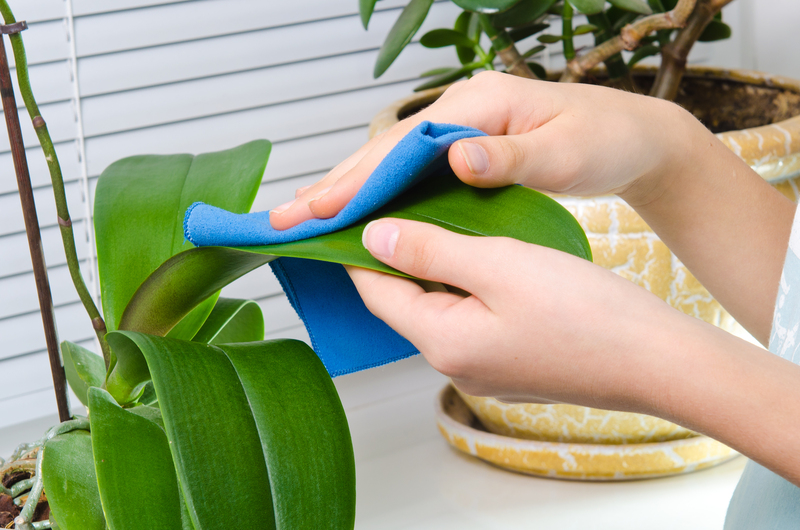Simplifying the Challenge of Cleaning Burnt Stovetop Mess
Posted on 15/09/2025
Simplifying the Challenge of Cleaning Burnt Stovetop Mess
Has a cooking mishap left your stovetop looking like a disaster zone? Don't worry, you're not alone! Almost every home chef has battled the aftermath of spattered sauces or overboiled pasta. Cleaning a burnt stovetop can feel overwhelming, but with the right techniques, tools, and mindset, restoring your sparkling cooktop can be easier than you think. In this comprehensive guide, we'll unravel the complexities and simplify the challenge of cleaning burnt stovetop mess, helping you reclaim your kitchen with confidence.
Why Cleaning Burnt Stovetop Messes Is Important
Taking on burnt stovetop stains might seem purely cosmetic, but there's more at stake than appearance. Grimy, scorched surfaces can:
- Harbor germs and bacteria
- Lead to unpleasant odors
- Affect the performance of your burners
- Increase fire hazards
- Cause permanent damage to your appliance
Regular stovetop maintenance ensures not only a hygienic and efficient kitchen but also prolongs the lifespan of your appliance. Simplifying stovetop cleaning makes these benefits easier to achieve after each cooking session.

Understanding Different Types of Stovetops
Before jumping into the cleaning methods, it's crucial to identify what kind of stovetop you have since burnt-on messes on each type may require a distinct approach.
Gas Cooktops
Gas stoves feature removable grates and burners. Spills often seep beneath, making thorough, regular cleaning essential.
Electric Coil Stoves
These models have exposed coiled burners. While durable, cleaning beneath coils can be tricky and requires careful handling.
Glass or Ceramic Cooktops
Sleek and stylish, these flat-surface stoves are prone to scorch marks and burnt rings. However, their smooth texture makes wiping easy--if you use the right supplies.
Keen observation will help you choose the safest and most effective stovetop cleaning solution suited to your specific surface.
Preparing Your Stovetop for Cleaning
Preparation is key to simplifying the challenge of cleaning a burnt stovetop. Here's how you should get ready:
- Turn off the stove and allow all parts to cool completely.
- Unplug electric units or disconnect gas, if necessary.
- Remove grates, coils, or burner caps for separate cleaning.
- Wipe loose debris with a damp cloth to avoid scratching.
Safety matters: Never clean a stove while it's still hot, and always check your manufacturer's manual for any specific cleaning advice or warnings.
The Best Supplies for Cleaning Burnt-on Stovetop Residue
As with every cleaning challenge, using the right supplies makes all the difference. For simplifying burnt stovetop mess removal, stock your supplies cabinet with:
- Baking soda - A natural, gentle abrasive perfect for loosening stubborn stains
- White vinegar - Cuts through grease while neutralizing odors
- Lemon juice - Natural acidity helps dissolve burnt residue and leaves a fresh scent
- Mild dish soap - Breaks down surface oils and food splatters
- Non-abrasive scrubbing pads or sponges - Won't scratch glass or coated surfaces
- Plastic razor blades or special scraper tools - Perfect for glass stovetops
- Old toothbrushes - Gets into crevices and burner creases
- Microfiber cloths - Leaves a streak-free polish
Optional, for heavy-duty cleaning: Commercial stovetop cleaners made for your stove's finish, or a steam cleaner for deep sanitation.
Step-by-Step Guide: How to Simplify Burnt Stovetop Cleaning
1. Identify the Burnt Areas
Begin by assessing the severity of the mess. Are you dealing with light splashes or dark, crusty patches? Light messes clean up easily, while thick buildup needs extra attention.
2. Apply a Cleaning Solution
- For gas or electric burners, fill your sink with hot, soapy water and soak removable parts for at least 20 minutes.
- For glass stovetops, cover the mess with a baking soda paste (3 parts soda, 1 part water), or sprinkle baking soda and spritz vinegar directly onto marks.
3. Let It Sit and Soak
Patience is a time-saving trick. Allow your chosen cleaner to penetrate burnt-on residue for 15-30 minutes. This softens the mess, so scrubbing becomes simpler and faster.
4. Scrub Gently
- Use a non-scratch sponge or pad to work on the softened stains.
- On glass surfaces, gently slide a plastic scraper at a low angle to lift off crusty spots.
- Use an old toothbrush to target tricky crevices and around burner rings.
5. Rinse and Wipe Clean
Dampen a microfiber cloth with warm water and carefully remove all cleaning paste and loosened grime. Repeat scrubbing if needed for persistent stains, applying more paste or solution as necessary.
6. Tackle Stubborn Burnt Stovetop Messes
- For extremely stubborn burnt-on stains, make a thick paste of baking soda and hydrogen peroxide, or buy a specialty stovetop cleaner designed for your appliance. Always check compatibility to avoid damaging your stovetop.
- For recurring grease residue, rub with a half lemon sprinkled with salt for natural degreasing power.
7. Dry and Polish for a Brilliant Finish
Once you're satisfied, dry thoroughly with a clean microfiber cloth. For glass and ceramic tops, finish by buffing with a dry towel for a high-gloss shine.
Quick Solutions for Last-Minute Stovetop Cleaning
Sometimes, you need solutions fast. Follow these tips to quickly simplify burnt stovetop mess cleanups:
- Keep a spray bottle of 1:1 vinegar and water handy for immediate splatters.
- Wipe spills as soon as the cooktop cools to prevent burning-on.
- Lay down foil or reusable liners on gas burners to catch drips.
- Wipe with a damp cloth daily to avoid tough buildup and minimize deep cleaning frequency.
Common Mistakes to Avoid When Cleaning Burnt Stovetops
Protect your stovetop and simplify the process by steering clear of these typical errors:
- Using steel wool or metal scrubbers: These can scratch and permanently mar your surface.
- Letting stains build up for weeks: The longer burnt messes sit, the harder removal becomes.
- Applying harsh chemicals to delicate glass or coated surfaces: This can strip protective coatings and dull finishes.
- Cleaning hot surfaces: This can cause burns or destroy the integrity of your cleaning materials.
- Reassembling wet burners: Make sure all parts are bone dry before reattaching to avoid electrical issues.
Eco-Friendly Ways to Clean Burnt Stovetop Messes
Want to simplify stove cleaning without harming the environment? Try these green cleaning tips:
- Baking soda, vinegar, and lemon juice: All natural and biodegradable, yet highly effective.
- Use old t-shirts or towels as cleaning rags to reduce waste.
- Essential oils, like tea tree or eucalyptus, can be added to cleaning solutions for extra antimicrobial action and a fresh scent.
- Reusable silicone scrubbers last longer than disposable sponges and reduce pollution.
Preventing Future Burnt Stovetop Mess: Maintenance Tips
Keeping your stovetop in peak shape is far easier (and much less time-consuming!) than performing tough burnt-on cleanups:
- Wipe down after every use, even if messes appear minor.
- Regularly deep-clean burner grates and drip pans--at least once a month.
- Use spill guards or liners for easy catch-and-toss mess management.
- Boil-overs? Place a wooden spoon across the pot to prevent spills.
- Avoid overfilling pans and keep lids ajar to manage bubbling dishes.
- Inspect for worn gaskets or seals that may allow food to seep past burners.

FAQs: Burnt Stovetop Cleaning Demystified
Is it safe to use oven cleaner on a burnt stovetop?
Usually not. Oven cleaners can be caustic and may damage stove finishes, especially on glass or ceramic cooktops. Always check your manufacturer's advice and stick to gentler solutions unless specified.
How can I quickly remove burnt sugar or caramel from a stovetop?
Let the cooktop cool, dab the spot with warm, damp towels to soften, then apply a vinegar-baking soda paste. Gently scrape away residue with a plastic blade, reapplying paste as needed.
What's the best stovetop cleaner for daily use?
A 1:1 mix of vinegar and water in a spray bottle is cheap, effective, and safe for most surfaces. For glass tops, use a dedicated cleaner or baking soda paste for tough spots.
Your Stovetop, Simply Spotless: Final Thoughts
Simplifying the challenge of cleaning burnt stovetop mess isn't about elbow grease alone--it's about smart preparation, proven cleaning strategies, and ongoing kitchen maintenance. By knowing your stovetop, using the right supplies, and preventing future accidents, you'll spend less time scrubbing and more time enjoying delicious, fuss-free meals. Whether you're tackling yesterday's spaghetti splatter or a forgotten spill, every home chef can keep their stove shining bright--all it takes is a dash of knowledge and a sprinkle of motivation!
Ready to restore your stovetop's sparkle? With the detailed guidance above, you can transform stovetop cleaning from a dreaded chore into a simple, satisfying routine. Happy cleaning!




